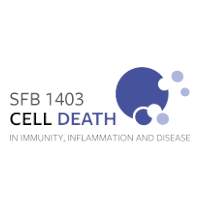TIR-catalyzed ADP-ribosylation reactions produce signaling molecules for plant immunity
Abstract
Plant pathogen-activated immune signaling by nucleotide-binding leucine-rich repeat (NLR) receptors with an N-terminal Toll/Interleukin-1 receptor (TIR) domain converges on Enhanced Disease Susceptibility 1 (EDS1) and its direct partners Phytoalexin Deficient 4 (PAD4) or Senescence-Associated Gene 101 (SAG101). TIR-encoded NADases produce signaling molecules to promote exclusive EDS1-PAD4 and EDS1-SAG101 interactions with helper NLR sub-classes. Here we show that TIR-containing proteins catalyze adenosine diphosphate (ADP)-ribosylation of adenosine triphosphate (ATP) and ADP ribose (ADPR) via ADPR polymerase-like and NADase activity, forming ADP-ribosylated ATP (ADPr-ATP) and ADPr-ADPR (di-ADPR), respectively. Specific binding of ADPr-ATP or di-ADPR allosterically promotes EDS1-SAG101 interaction with helper NLR N requirement gene 1A (NRG1A) in vitro and in planta. Our data reveal an enzymatic activity of TIRs that enables specific activation of the EDS1-SAG101-NRG1 immunity branch.
Read more at Science10.1126/science.abq8180
